Mark I. Montrose, Edward M. Nakauchi9780471433088, 0-471-43308-X
Table of contents :
Team DDU……Page 1
Contents……Page 10
Preface……Page 16
Acknowledgments……Page 20
1.1 The Need to Comply……Page 22
1.2 Definitions……Page 24
1.3 Nature of Interference……Page 26
1.4.1 Test Environment……Page 27
1.4.2 Self-Compatibility……Page 29
1.4.3 Validation of Measured Data……Page 30
1.4.4 Problems during Emissions Testing……Page 31
1.5 Time-Domain versus Frequency-Domain Analysis……Page 33
1.6 EMC Testing Methodologies……Page 35
1.6.2 Compliance and Precompliance Testing……Page 36
References……Page 37
2.1 Relationship between Electric and Magnetic Fields……Page 38
2.2 Methods of Noise Coupling……Page 43
2.2.1 Common-Impedance Coupling……Page 45
2.2.2 Electromagnetic Field Coupling……Page 46
2.2.4 Radiated Coupling–Magnetic Field……Page 48
2.2.5 Radiated Coupling–Electric Field……Page 49
2.2.6 Radiated and Conducted Coupling Combined……Page 52
2.3.1 Differential-Mode Currents……Page 53
2.3.3 Example on Difference between Differential- and Common-Mode Currents……Page 54
2.3.4 Radiation due to Differential-Mode Currents……Page 57
2.3.5 Common-Mode Radiation……Page 59
2.3.6 Conversion between Differential- and Common-Mode Energy……Page 60
2.4 Static Fields……Page 61
2.4.2 Triboelectric Series……Page 62
2.4.3 Failure Modes From a Static Event……Page 64
References……Page 67
3.1 Time-Domain Analyzer (Oscilloscope)……Page 68
3.1.1 Oscilloscope Probes……Page 73
3.2 Frequency-Domain Analyzers……Page 74
3.2.1 Spectrum Analyzers……Page 78
3.2.2 Receivers……Page 85
3.3 Precompliance versus Compliance Analyzers……Page 87
3.4 Correlation Analyzer……Page 89
3.4.1 Characteristics of Cancellation System……Page 91
3.4.2 Coherence Factor……Page 92
References……Page 96
4 Test Facilities……Page 98
4.1.1 Requirements for an OATS……Page 99
4.1.2 Test Configuration-System, Power, and Cable Interconnects……Page 106
4.1.3 Operating Conditions……Page 108
4.1.5 Alternate Test Sites……Page 116
4.2 Chambers……Page 117
4.2.1 Anechoic Chamber……Page 118
4.2.2 Screen/Shield Rooms……Page 125
4.2.3 Reverberation Chamber……Page 128
4.3.1 TEM Cell……Page 130
4.3.2 GTEM Cell……Page 131
References……Page 133
5.1 Need for Probes, Antennas, and Support Equipment……Page 134
5.2 Voltage Probes……Page 136
5.3 Current Probes……Page 137
5.3.1 Specifying a Current Probe……Page 139
5.3.2 Limitations When Using Current Probes……Page 143
5.4 LISN/AMN (AC Mains)……Page 145
5.5 CDNs (Data and Signal Lines)……Page 149
5.6 Absorbing Clamp……Page 151
5.6.1 Test Setup and Measurement Procedure……Page 153
5.7 Bulk Current Injection-Probe and Insertion Clamp……Page 155
5.7.1 Choosing a BCI Probe……Page 156
5.8 Basic Probe Types-Near Field and Closed Field……Page 158
5.9 Sniffer Probes……Page 161
5.9.1 Near-Field Probes……Page 163
5.10 Differential-Mode Probes……Page 164
5.11 Home-Made Probes……Page 167
5.12 Alternate Troubleshooting Devices……Page 168
5.13 Far-Field Antennas……Page 171
5.13.1 Common Antennas Used for EMC Testing……Page 174
References……Page 177
6.1 Overview of Conducted Currents……Page 178
6.1.1 Common- and Differential-Mode Currents on Wires and Cables……Page 180
6.1.2 Coupling Paths for Conducted Emissions……Page 182
6.2.1 Engineering Investigation in Laboratory or Engineer’s Office……Page 184
6.3 Conducted Emissions Testing (AC Power Mains)……Page 185
6.3.1 Potential Problems during Conducted Emission Testing……Page 187
6.3.2 In Situ Testing of Systems and Installations……Page 188
6.4 Immunity/Susceptibility Tests……Page 189
6.4.1 Electrical Fast Transient and Burst Testing……Page 190
6.4.2 Surges……Page 195
6.4.3.1 Coupling Methods……Page 202
6.4.3.2 Typical Conducted Immunity Test Setup and Equipment……Page 205
6.4.3.3 Performing Typical Conducted Immunity Test……Page 210
6.4.3.4 Diagnosis and Fixes……Page 212
6.4.4 AC Mains Supply Dips, Dropouts, and Interruptions……Page 213
6.4.4.1 AC Mains Supply Sags/Brownouts……Page 216
6.4.4.2 Swell Testing……Page 217
6.4.4.4 Diagnosis and Fixes……Page 219
6.4.5 Power Line Harmonics……Page 220
6.4.5.1 How Harmonics Are Created and Related Concerns……Page 221
6.4.6 Voltage Fluctuation and Flicker……Page 232
6.4.6.1 Description of Short-Term Flicker……Page 233
6.4.6.2 Instrumentation……Page 234
References……Page 236
7 Radiated Testing……Page 238
7.1 Performing Radiated Tests……Page 239
7.1.2 Precompliance Testing……Page 241
7.1.3 Performing Precompliance Analysis……Page 244
7.1.4 Formal EMC Qualification Tests……Page 245
7.1.5 Instrumentation Error……Page 246
7.1.6 In Situ Testing of Systems and Installations……Page 248
7.2 Immunity/Susceptibility Tests……Page 249
7.2.1 Radiated Immunity……Page 250
7.2.1.1 Modulation……Page 252
7.2.1.2 Harmonic Issues……Page 254
7.2.2 Electrostatic Discharge……Page 255
7.2.2.2 ESD Waveforms……Page 256
7.2.2.3 Triboelectric Series……Page 257
7.2.2.4 Typical Test Setup……Page 258
7.2.2.6 Diagnosis and Fixes……Page 262
7.2.2.7 Concerns Related to Analyzing ESD Events……Page 263
7.2.2.8 Alternative ESD Test Simulator……Page 264
7.2.2.9 Other Uses for ESD Simulator……Page 265
7.2.3 Power Frequency Magnetic Field Disturbance……Page 266
7.2.3.2 EUT Performance Criteria……Page 267
7.2.3.3 Typical Test Setup……Page 268
7.2.3.5 Performing the Test……Page 270
References……Page 271
8 General Approaches to Troubleshooting……Page 272
8.1 General System Testing and Troubleshooting……Page 273
8.1.1 Emission Testing……Page 274
8.1.2 Immunity Testing……Page 276
8.1.3 In Situ Testing……Page 277
8.2 Potential Problems During Testing and Troubleshooting……Page 280
8.3 Testing and Troubleshooting Concerns……Page 284
8.3.1 Systematic Approach for Emission Testing and Troubleshooting……Page 285
8.3.2 Systematic Approach for Immunity Testing and Troubleshooting……Page 287
8.3.3 Systematic Approach to Detecting and Locating Problems……Page 288
8.3.4 Minimum Requirements for Performing EMC Tests……Page 292
8.4 Repeatability of System Testing……Page 293
8.5 Unexpected Problems after Production Has Begun……Page 296
8.6 Creative Approaches to Troubleshooting (Case Studies)……Page 297
References……Page 298
9 On-Site Troubleshooting Techniques……Page 300
9.1 Quick Fixes and Solutions……Page 301
9.1.1 Conducted Solutions……Page 302
9.1.2 Radiated Solutions……Page 308
9.1.3 Crosstalk Solutions……Page 312
9.2 Simplified Troubleshooting Techniques……Page 313
9.2.2 The “Disabling-the-System” Technique……Page 314
9.2.3 The “Cable Disconnection” Technique……Page 315
9.2.4 The “Sticky Finger” Debugging Tool……Page 316
9.2.5 The “Sharpen-Your-Pencil” Tool……Page 317
9.2.6 The “Coolant Spray” Tool……Page 318
9.2.8 The “Radio Control Race Car Diagnostic Sensor……Page 319
9.2.9 The “Tin Can Wireless Antenna” for Signals above 1 GHz……Page 321
9.3.1 Using Probes for Immunity Testing and Troubleshooting……Page 322
9.3.2 Differential Measurement of RF Currents on Cables and Interconnects……Page 326
9.3.3 Switching Power Supply Effects on Common-Mode Conducted Noise……Page 329
9.3.4 Discrete Component Diagnostic Tool……Page 331
9.3.5 Tweezers Probe……Page 332
9.3.6 Miniature High-Discrimination Probe……Page 333
9.3.7 Using Current Probe as Substitute for Radiated Emission Testing……Page 334
9.3.8 Enclosure Resonances and Shielding Effectiveness……Page 336
9.4.1 Using Oscilloscope to Debug Signal Integrity Waveforms and Radiated Emissions……Page 337
9.4.2 Using Inexpensive Receivers for Emissions Testing……Page 340
9.4.3 Using Amateur Radio Transmitter for Immunity Testing……Page 342
9.4.4 Radiated Problem Masked as Conducted Emission Problem……Page 343
9.4.5 Determining Whether Conducted Emission Noise is Differential Mode or Common Mode……Page 344
9.4.6 Another Use of EFT/B Generator……Page 345
9.4.7 Signal Integrity Observations……Page 346
9.5.1 Switching Power Supplies-Measuring Magnetic Field Coupling……Page 347
9.5.2 Potential Problems When Using Ferrite Cores-Increase in Radiated Emissions……Page 349
9.5.3 Measuring Shielding Effectiveness of Materials and Enclosures……Page 351
9.5.4 Measuring Effects of High-Frequency Noise Currents in Equipment……Page 354
9.5.5 Measuring Noise Voltage across Seams in Enclosures……Page 357
9.6 Ambient Cancellation or Suppression……Page 360
9.7 Printed Circuit Board Diagnostic Scanners……Page 362
References……Page 366
Appendix A Building Probes……Page 368
Appendix B Test Procedures……Page 396
Glossary……Page 456
Bibliography……Page 468
Index……Page 474
About the Authors……Page 480
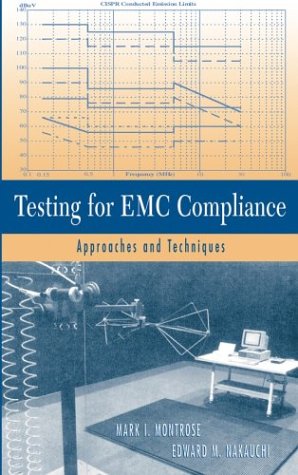
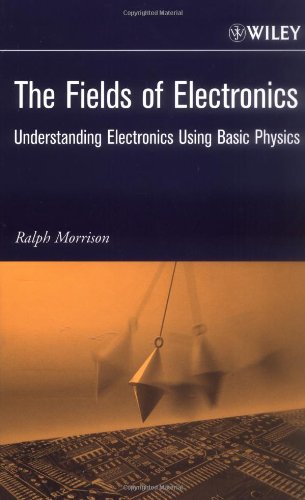
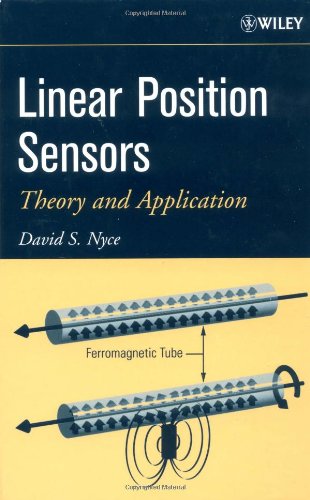
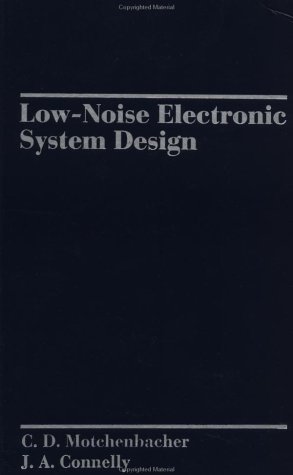


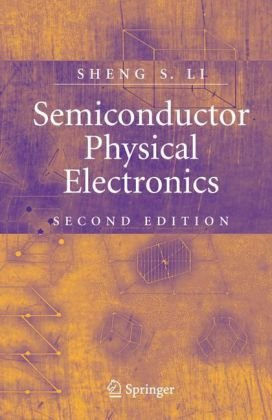
Reviews
There are no reviews yet.